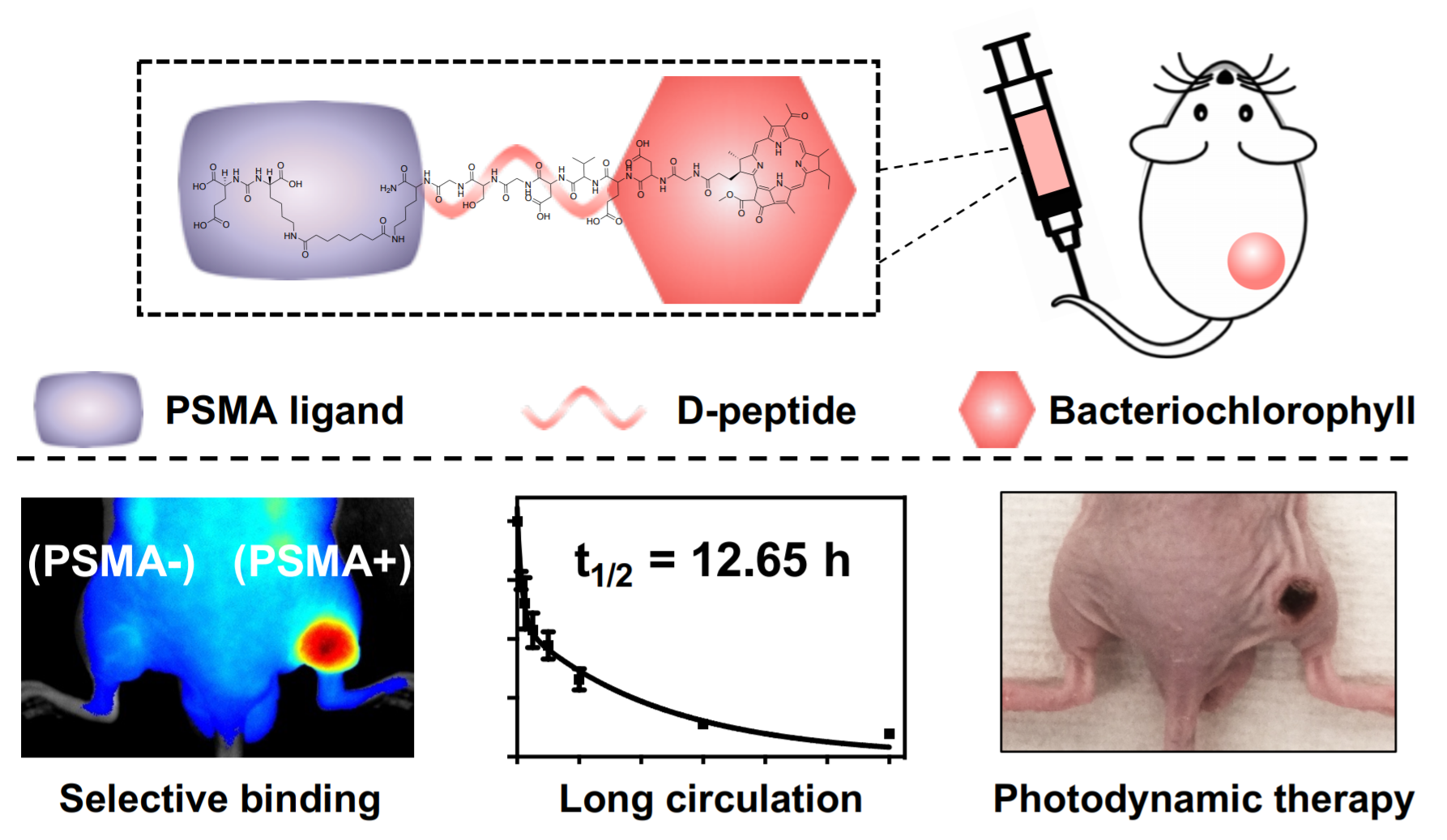Overchuk M, Damen MPF, Harmatys KM, Pomper MG, Chen J & Zheng G
Photochemistry and Photobiology, 2019
DOI:10.1111/php.13181

Targeted photodynamic therapy (PDT) combined with image‐guided surgical resection is a promising strategy for precision cancer treatment. Prostate‐specific membrane antigen (PSMA) is an attractive target due to its pronounced overexpression in a variety of tumors, most notably in prostate cancer. Recently, we reported a pyropheophorbide‐based PSMA‐targeted agent, which exhibited long plasma circulation time and effective tumor accumulation. To further advance PSMA‐targeted photodynamic therapy by harvesting tissue‐penetrating properties of the NIR light, we developed a bacteriochlorophyll‐based PSMA‐targeted photosensitizer (BPP), consisting of three building blocks: (1) a PSMA‐affinity ligand, (2) a peptide linker to prolong plasma circulation time and (3) a bacteriochlorophyll photosensitizer for NIR fluorescence imaging and photodynamic therapy (Qy absorption maximum at 750 nm). BPP exhibited excellent PSMA‐targeting selectivity in both subcutaneous and orthotopic mouse models. The nine D‐peptide linker in BPP structure prolonged its plasma circulation time (12.65 h). Favorable pharmacokinetic properties combined with excellent targeting selectivity enabled effective BPP tumor accumulation, which led to effective PDT in a subcutaneous prostate adenocarcinoma mouse model. Overall, bright NIR fluorescence of BPP enables effective image guidance for surgical resection, while the combination of its targeting capabilities and PDT activity allows for potent and precise image‐guided photodynamic treatment of PSMA‐expressing tumors.
